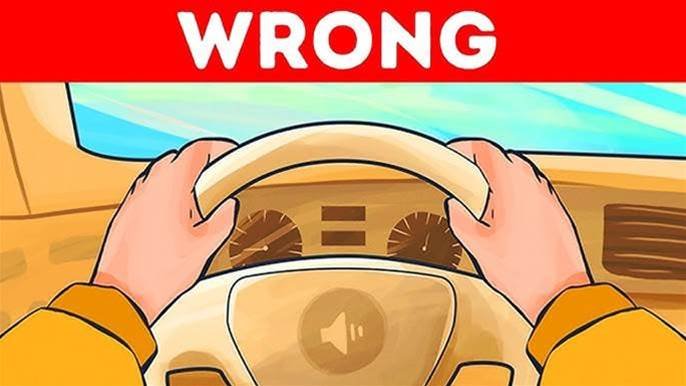Driving fast can be exhilarating, but it’s also risky if you’re not aware of the proper techniques and habits. Here are 6 things you may be doing wrong when driving fast that could put you at a disadvantage or, worse, in danger:
1. Not Adjusting Your Seat Properly
When driving at high speeds, having a proper seating position is crucial. Many people drive with their seat too far back, which reduces their control over the car.
- The Fix: Sit closer to the steering wheel, with your legs slightly bent and hands on the wheel at the 9 and 3 o’clock positions. This gives you more control and quicker response time. Make sure your back is fully supported by the seat for optimal posture.
2. Overuse of the Accelerator
Some drivers make the mistake of pushing the accelerator too hard when speeding up, thinking it will give them more control. In reality, this can cause the car to lose traction, especially if the road is slippery.
- The Fix: Smoothly apply the accelerator and avoid flooring it all at once. Gradual acceleration allows the tires to maintain traction and helps keep the car stable.
3. Ignoring Proper Tire Pressure
Tires are the only part of your car that make contact with the road, so their condition and pressure are critical when driving fast. Under-inflated or over-inflated tires can cause poor handling, reduced grip, and even tire blowouts.
- The Fix: Always check tire pressure before driving at high speeds. Refer to your car’s manual for the correct PSI. Keep your tires properly inflated and replace them when they are worn out.
4. Overbraking or Sudden Braking
One of the most dangerous things you can do when driving fast is slamming on the brakes or braking too harshly. This can upset the car’s balance and cause the wheels to lock up, especially in wet conditions.
- The Fix: When you need to brake at high speed, apply steady, gradual pressure. If you have ABS (Anti-lock Braking System), use firm, consistent pressure. Don’t pump the brakes. In non-ABS vehicles, smooth, controlled braking is key to maintaining stability.
5. Not Using the Correct Gears (Manual Transmission)
If you’re driving a manual car and not shifting at the proper RPMs, you may be losing power and acceleration. Shifting too early or too late can affect your car’s ability to respond quickly at high speeds.
- The Fix: Shift gears at the correct RPMs for optimal performance. Typically, shift at higher RPMs (about 3,000-5,000 RPMs, depending on your car) for maximum acceleration and smooth power delivery.
6. Inadequate Cornering Technique
Taking sharp turns at high speeds is a delicate balance. Many drivers make the mistake of turning the steering wheel too much, which can lead to oversteering, or not enough, which can lead to understeering.
- The Fix: When entering a corner, brake before the turn, not during it. Use the “slow in, fast out” technique: slow down as you approach the curve, and then accelerate through the curve, gently increasing speed as you exit. Keep a steady grip on the wheel to avoid oversteering or understeering.
Bonus: Driving Too Aggressively
While it might seem like aggressive driving is needed to go fast, it can often lead to mistakes. Quick lane changes, tailgating, and sudden maneuvers create unnecessary risks for yourself and others on the road.
- The Fix: Even when driving fast, try to stay smooth, controlled, and anticipate other drivers’ actions. Always keep a safe distance from other vehicles, and be ready to react to changes in the road ahead.
Driving fast isn’t just about speed—it’s about maintaining control and using the right techniques. Keep these tips in mind for a safer, more enjoyable high-speed driving experience.



